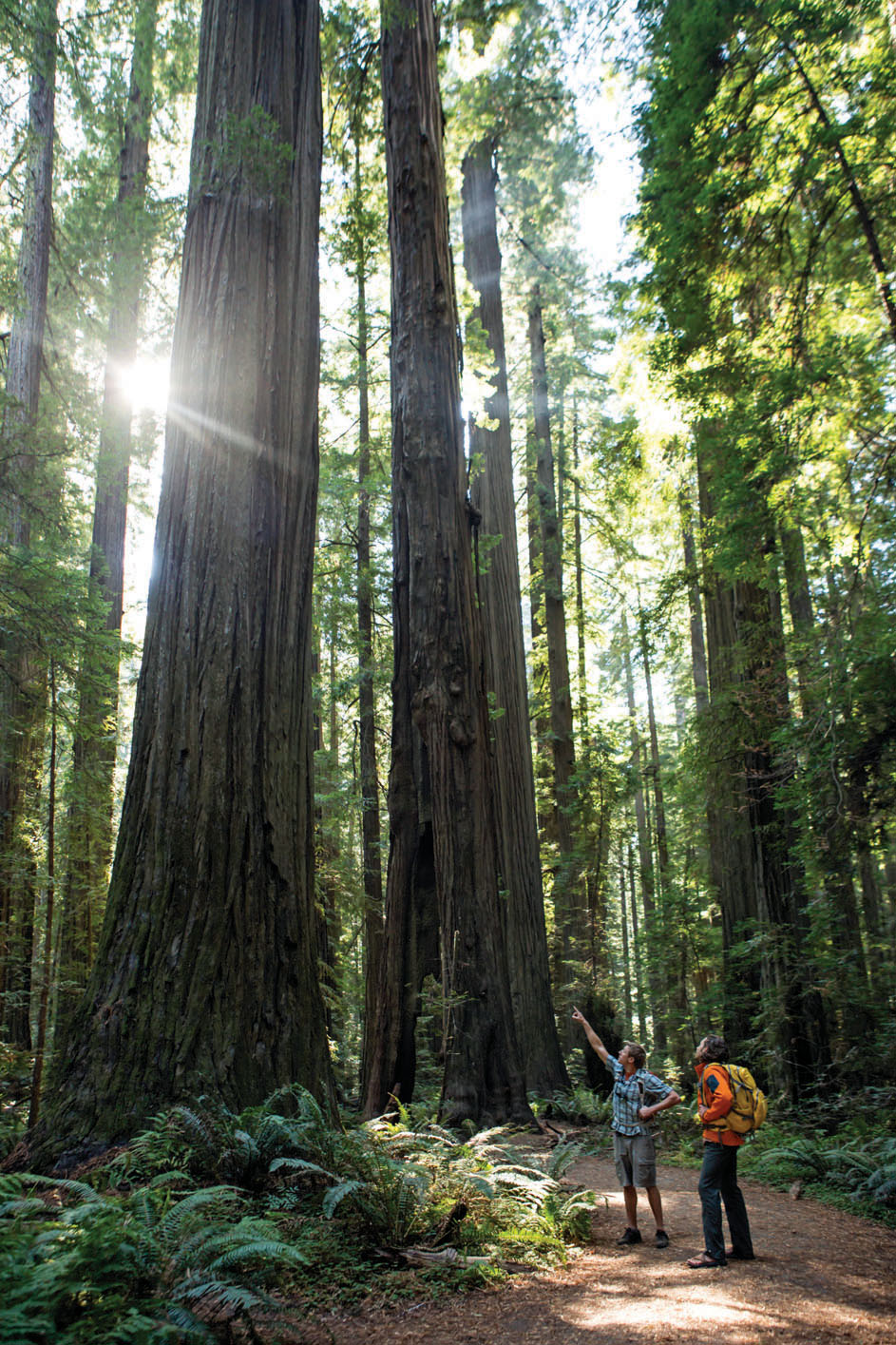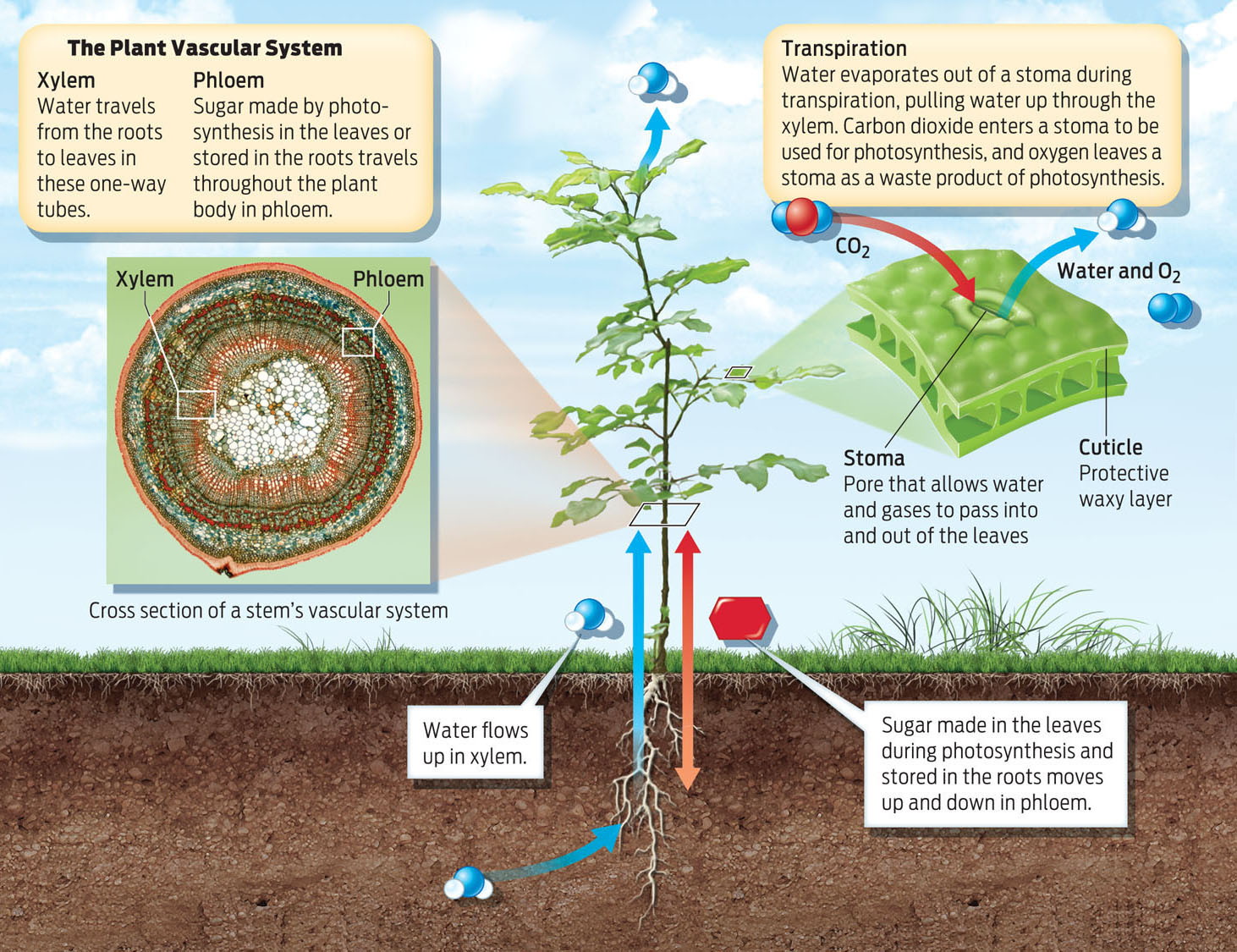 Why don’t plants bleed?
Why don’t plants bleed?
VASCULAR SYSTEM Tube-shaped vessels and tissues that transport nutrients throughout an organism’s body.
ANSWER: Like animals, plants have a vascular system for transporting fluids. Instead of blood, however, a plant’s vascular system transports nutrients like water and sugar throughout the plant body. Plants need water to live and grow (you may have learned this the hard way if you’ve ever killed a plant with neglect). Among other things, water is crucial for photosynthesis in leaves. But you don’t water a plant’s leaves; you water the roots by pouring water in the soil. How does water get from the roots to the rest of the plant?

XYLEM Plant vascular tissue that transports water from the roots to the shoots
PHLOEM Plant vascular tissue that transports sugars throughout the plant.
A plant’s water-carrying tissue is known as xylem (pronounced ZYE-lum). Xylem tissue is made of cells arranged into long, stiff tubes; the cells have holes in each end and are stacked one on top of the next. Water moves up from the roots through these tubes to the aboveground stems, and eventually into the leaves, where it is used during photosynthesis to make sugar. Plant cells use the newly synthesized sugar as food, so the sugar must be transported out of the leaves and back down through the plant. Another series of tubes, known as phloem (pronounced FLO-um; think “f” for “food”), transports sugar through the plant. Phloem supports two-way transport: sugar moves down to the roots, where some of it is stored; later, sugar moves up to the shoot system, where it provides nutrition and energy for growing fruit, buds, and leaves.
TRANSPIRATION The loss of water from plants by evaporation, which powers the transport of water and nutrients through a plant’s vascular system.
720
CUTICLE The waxy coating on leaves and stems that prevents water loss.
Moving water and other nutrients up to the top of a 300-foot tree against the force of gravity is no easy task—hundreds of pounds of water must be lifted up through what is essentially a long water pipe. And unlike animals, which have a heart to pump blood along, plants have no such mechanical help. Instead, plants rely on evaporation of water from the leaves to draw water up the plant, a process called transpiration. Because water is a polar molecule that can form hydrogen bonds with other water molecules, it has great cohesive strength (see Chapter 2). As water evaporates from leaves into the air, water in the xylem is pulled up to replace it. The cohesive strength of water is enough to counteract the force of gravity and pull water up to astonishing heights.
STOMATA (SINGULAR: STOMA) Pores on leaves that permit the exchange of oxygen and carbon dioxide with the air and allow water loss.
For a plant, transpiration is life sustaining: it is the force that carries water through the plant. But losing too much water can be dangerous. On a hot, dry, or windy day, a large tree can lose hundreds of gallons of water vapor from its leaves. To control the amount of water lost by transpiration, a plant’s leaves are coated with a waxy cuticle that functions somewhat like a rubber suit, sealing in moisture. At regular intervals, the cuticle is punctuated by pores, called stomata, which open and close. When the stomata are open, water vapor leaves freely and other gases enter and exit—specifically, carbon dioxide and oxygen. When the stomata are closed, water and gases are sealed in. Many plants keep their stomata open during the day, letting in carbon dioxide for photosynthesis. At night, they close the stomata, conserving water (INFOGRAPHIC 32.2).
On a hot, dry, or windy day, a large tree can lose hundreds of gallons of water vapor from its leaves.
Plants have a vascular system that transports specific substances throughout the plant body. Transport of water relies on a type of evaporation from leaves called transpiration.

721
Eventually, if a plant loses too much water, it will die. During an extreme drought, if you put a stethoscope to a tree and listen closely, you may hear clicks. This is the sound of the water column in the xylem breaking because there is no water in the soil to replace the water being lost by transpiration.
The presence of specialized tissues for transporting water is what distinguishes plants from their water-dwelling ancestors, the algae. The evolution of this vascular tissue is what allowed plants to colonize nearly every part of the land, from valley to mountaintop. A few primitive land plants, such as mosses and liverworts, also lack true roots and shoots containing vascular tissue. Without specialized tubes for transporting water, these nonvascular plants are limited to environments that are saturated with water, where they grow close to the ground in squat, spongy mats.